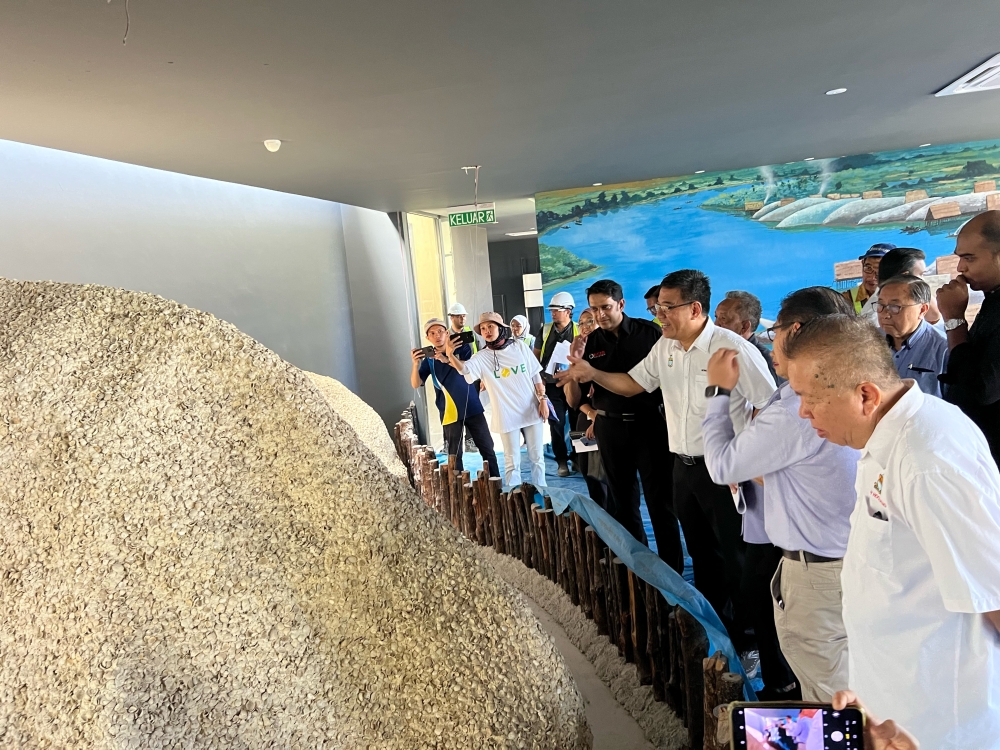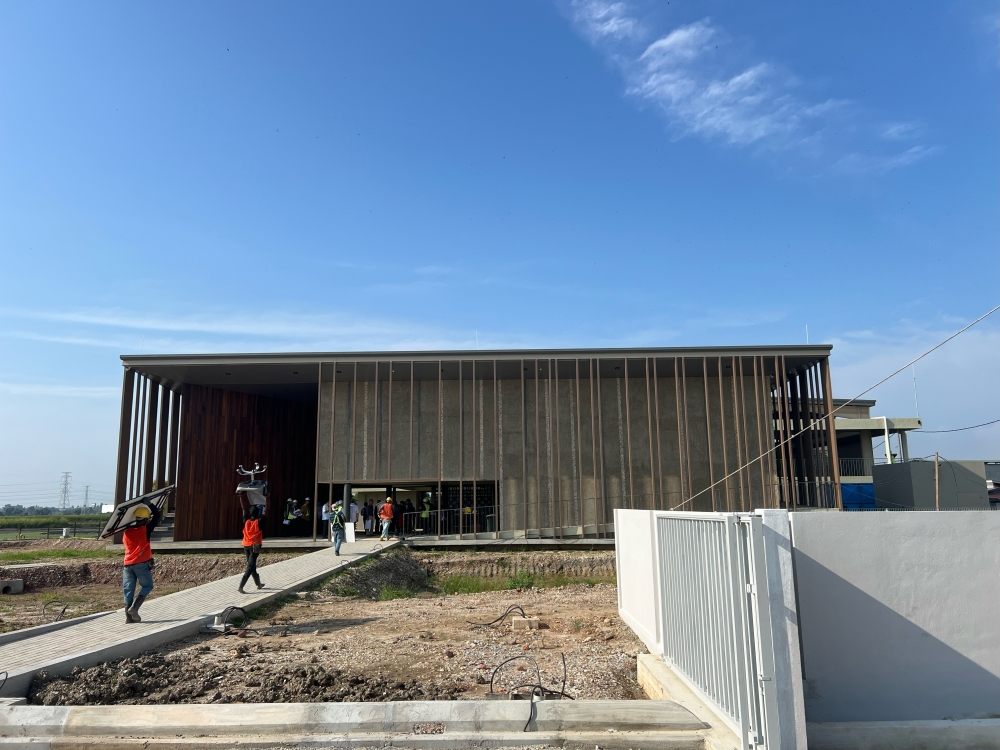SEBERANG PERAI, May 14 — The quiet sleepy village of Guar Kepah will soon become a busy tourism spot the Guar Kepah Archaeological Gallery opens at the end of this year.
The small village, tucked away in the rural area of Kepala Batas in Penang and surrounded by paddy fields, will be put on the map of an archaeological trail that will start from Gua Kelam in Perlis, to Sungai Batu and Lembah Bujang in Kedah, and finally ending at Lenggong Valley in Perak.
“This trail will bring in a lot of tourists like how we see tourists flocking to Angkor Wat,” Penang Tourism and Creative Economy state executive councillor Wong Hon Wai said when visiting the construction site of the Guar Kepah Archaeological Gallery today.

Construction work on the gallery started back in 2022. The double-storey minimalist structure built on land measuring almost one hectare (2.39 acres) is now 98 per cent complete.
Wong said the exterior works and structure are almost completed and it will take a few more months for the interior works including the display and exhibits section to complete.
“It will take time to ensure the interiors are designed to accommodate the ‘Penang Woman’ and also the 41 artefacts that will be sent back from Leiden, the Netherlands,” he said.
The Guar Kepah shell midden was the first archaeological site in Malaysia to be discovered by British archaeologist George William Earl in the 1840s.
Shell middens refer to mounds of kitchen debris consisting mostly of shells and other food remnants. It is indicative of ancient human settlement and was sometimes used as burial sites.
Between 1851 and 1934, British archaeologists excavated 41 skeletons from three shell middens — A, B and C — in Guar Kepah.
Wong said that at that time, the shell middens were recorded at a height of about 18 feet (5.4 metres) by the British.
“This is about the same height of this new gallery so we can imagine how high the shell middens were,” he said.
The 41 skeletons excavated by the British were stored at the National Natuurhistorisch Museum in Leiden for many years.
Last year, the Penang government initiated the process for the artefacts to be returned here.

Wong said he has met with the National Heritage Department and the Netherlands Ambassador regarding the repatriation process of the 41 human skeletons from the Netherlands.
“We were told that they are working on the details of the agreement or transfer,” he said.
He said the National Heritage Department, the Ministry of Tourism, Arts and Culture and the Foreign Ministry are working together on the repatriation process to Malaysia.
“The agreement of transfer will be submitted to the Netherlands and once they sign the document, then the repatriation process can start,” he said.
He said it is hoped that the artefacts will arrive in time for the gallery to open to the public at the end of this year.
Aside from the 41 skeletons, archaeological works by Universiti Sains Malaysia’s (USM) Centre for Global Archaeological Research (CGAR) at Guar Kepah discovered a partial skeleton of a woman in 2017.
Subsequently dubbed the “Penang Woman”, the skeleton was the first and remains the only Neolithic skeleton found in a shell midden in Malaysia.
Currently, the skeleton is being preserved at CGAR in USM pending completion of the gallery.
CAGR director Professor Stephen Chia said they are currently undertaking DNA testing of the Penang Woman.
He said the DNA details of the Penang Woman will reveal more information of the cultures of the early human settlement there.
Wong said the gallery will feature an interactive exhibition space so that visitors can visualise the early human settlement in the area.
The excavation site where the Penang Woman will also be on display along with shell midden displays.
“This gallery will also be a research centre as it will have a research laboratory and space to store artefacts,” he said.
Amenities such as toilets, a surau, a cafe and souvenir kiosks will also be available in the gallery.
The project is implemented by the Chief Minister Incorporated in cooperation with the Northern Corridor Implementation Authority.



















